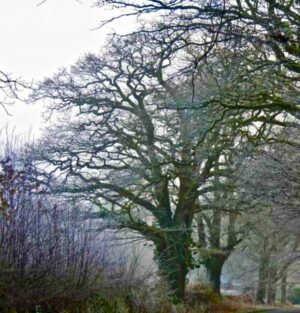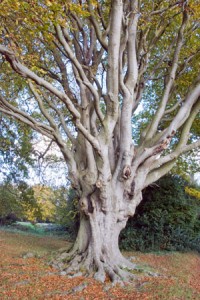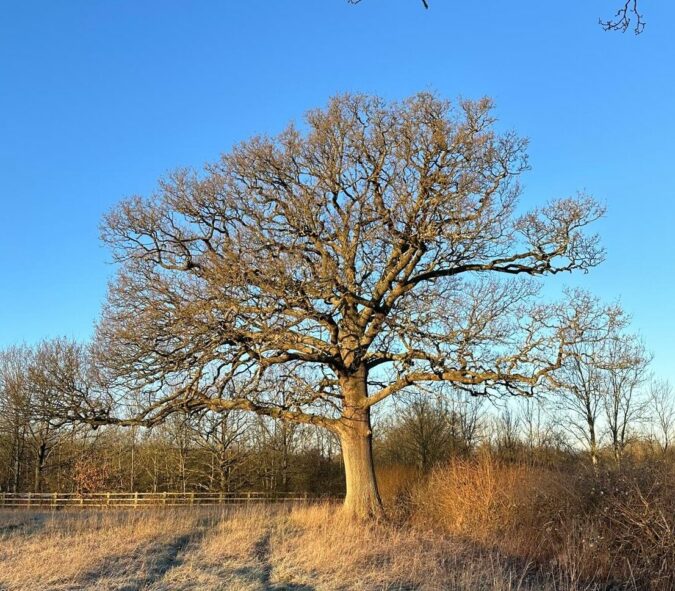Planting Oak for the future ?

At present, our forests and many across much of Europe have a medley of different species, and this has been the case for many hundreds of years. They have survived minor fluctuations in climate and weather. However, now climate and weather are changing in significant ways. There are more extreme weather events, ranging from unprecedented rainfall to drought and periods of very high temperatures. Winters seem to be be warmer and wetter, summers hotter and drier.
Consequently, there is concern that many tree species being planted today will not be able to survive in the conditions that they are likely to experience in 50 or a 100 years time.  Species like the European Beech (Fagus sylvatica) are likely to struggle (like many did in the heat wave of 1976). The root system of the beech is shallow, and though it has large roots spreading out in many directions, it cannot access water that may be present at deeper levels in the soil.
Species like the European Beech (Fagus sylvatica) are likely to struggle (like many did in the heat wave of 1976). The root system of the beech is shallow, and though it has large roots spreading out in many directions, it cannot access water that may be present at deeper levels in the soil.
Though it is not known how native trees might adapt or be able to respond to a changing climate, it is possible that the number of tree species per km2 able to survive through to the next century may well fall by a third to a half in a warmer climate (depending on how quickly the warming occurs).
Examination of some 60 plus European trees species at University of Vienna by Johannes Wessely et al suggested that the English or Pedunculate Oak (Quercus robur) may be a species that could cope with changing climatic conditions. It seems that native UK Oaks are genetically diverse, and this gives rise to variation and the potential to adapt to changing conditions. Oak is wind pollinated and its light pollen can be dispersed over long distances, which promotes outbreeding and genetic diversity.
Whilst the oak has always been valuable as a species for :-
- Timber production : it is used in furniture making and in the past thousands of oaks were used in the building of ships such as the Mary Rose.
- Carbon sequestration / storage - it is long lived and has a large above ground biomass
- Biodiversity : it provides a ‘home’ for many species of animals, plants and fungi. It offers food and shelter for many invertebrate species, numerous insects and spiders); its leaves often show the ‘scars’ of their feeding activities. Its bark is an ideal substrate for many lichen and bryophyte species (epiphytes). The roots of the trees establish mycorrhizal associations with various fungi.
Now, the Oak may prove to be valuable in a warmer world as a species for timber production and reforestation projects. The Oak’s ability to support other plant, animal and fungal species would also be important in terms of biodiversity and resilience.. Forests with a smaller number of tree species are thought to be less resilient to climate change and less biodiverse.

A solitary oak
Comments are closed for this post.

That Q. robur may be more resilient is good news – we’ve planted ~3,000 in the last few years. The French burn Notre Dame down approximately every three hundred years and so we’ll be ready for them!
Joking aside – the spaces between the rows of oak are being left for natural regeneration and biodiversity reasons.
Steve Ford
1 June, 2024